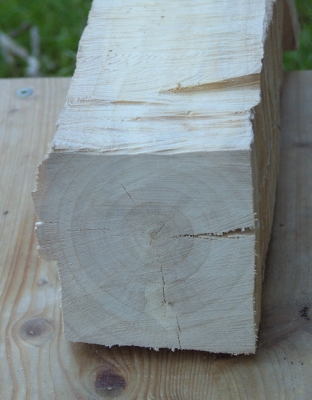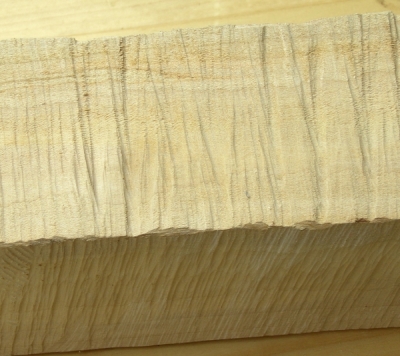The Hornbeam (Carpinus betulus) is also called European beech. The name derives from the Old High German word  "Haganbouche". The word refers to the fact that the tree "accepts" to be cut easy without an problems. The second part of the name refers to the similarity to the European beech (Fagus salvatica) - but the hornbeam is not closely related to the European beech.
"Haganbouche". The word refers to the fact that the tree "accepts" to be cut easy without an problems. The second part of the name refers to the similarity to the European beech (Fagus salvatica) - but the hornbeam is not closely related to the European beech.
The wood of the hornbeam is whitish. Between sapwood and heartwood is no big differences in color. The annual rings are very difficult to see and the wood looks very smooth. The wood of the hornbeam is the heaviest wood of native tree species. Accordingly, it is very dense and hard. Furthermore, it is considered to be tough and elastic. Its tensile strength is still greater than that of the oak. However, the wood shrinks quite strong and tends to crack.
The wood is a heavy and very hard. It is even harder than that of beech or oak. therefore it is also known as iron wood or iron tree. Because of its hardness of the wood is used where high stresses appear. Today, the wood plays a quite big role when building pianos. Plane soles, and other tools for butchers chopping blocks or Billiardqueues are more typical examples.
 In spite of its hardness the wood is good to work with tools and machines. With sharp blades and cutting tools it can be carved, turned and profiled without difficulties. The surface is easy to stain and to polish, but it tends to fade in the sunlight.
In spite of its hardness the wood is good to work with tools and machines. With sharp blades and cutting tools it can be carved, turned and profiled without difficulties. The surface is easy to stain and to polish, but it tends to fade in the sunlight.



